Abstract
The paper contains up-to-date information on the occurrence of cutaneous leishmaniasis in natural foci in the USSR. Data are given on the vertebrates that are the main carriers and reservoirs of leishmaniae, the phlebotomines that are the vectors of the parasite, and the conditions required for the independent existence of foci of infection unlinked with any human economic activity.
The main achievements of Soviet investigators in research on natural foci are described, a preliminary schema is given for typing foci by the nature of the terrain, and there is also an account of biocoenoses in the wild animal burrows that constitute the primary natural unit foci. The biology and ecology of the main hosts of leishmaniae, the interrelationships between leishmaniae, vertebrate animals, and phlebotomines, and the conditions required for infection of human beings with leishmaniae are also discussed.
Full text
PDF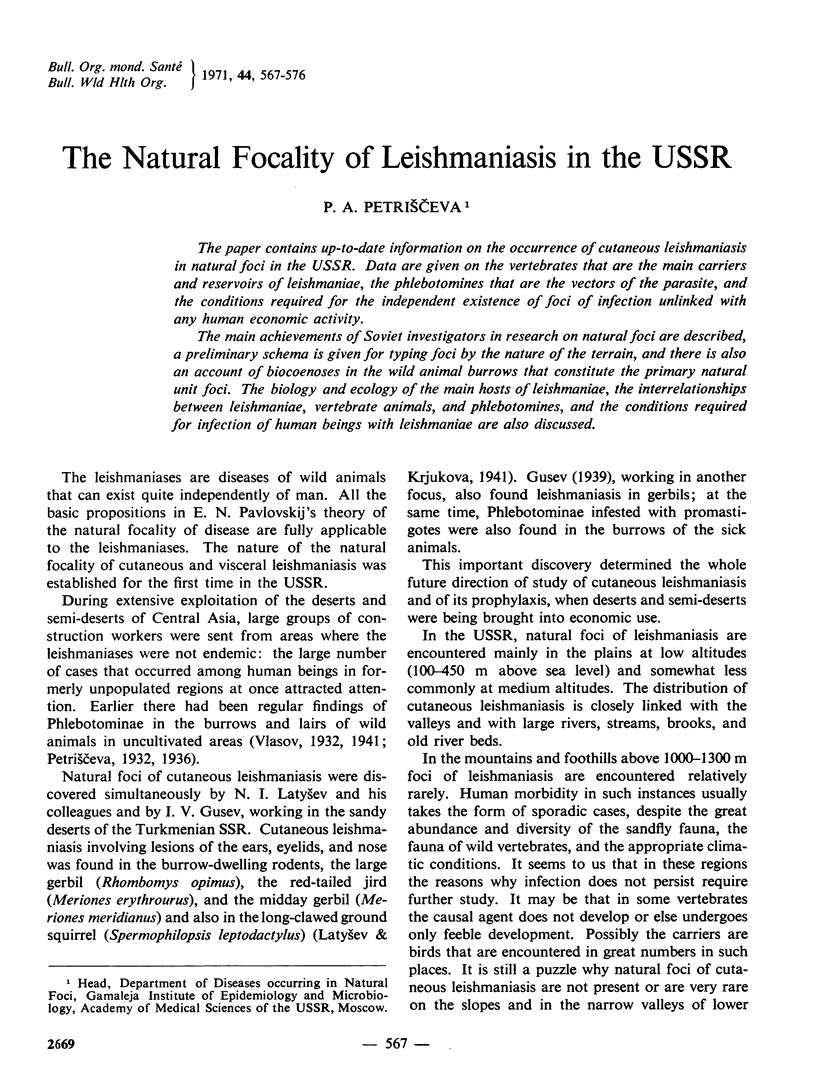
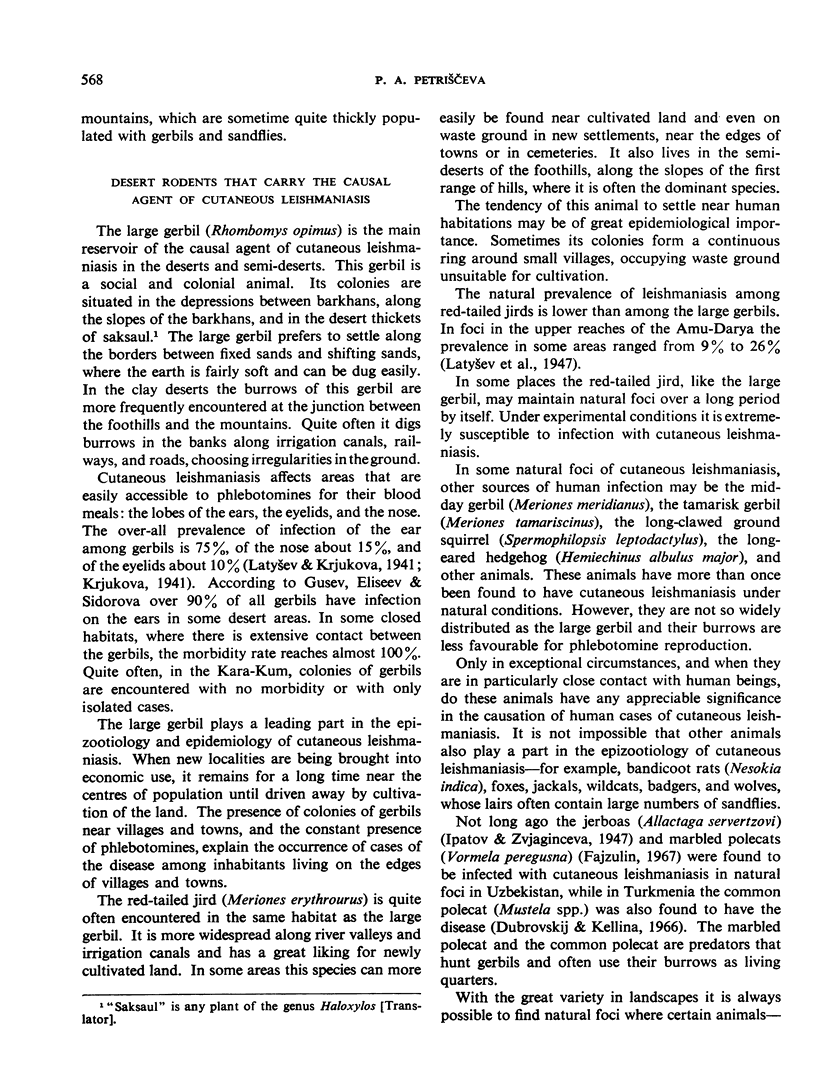
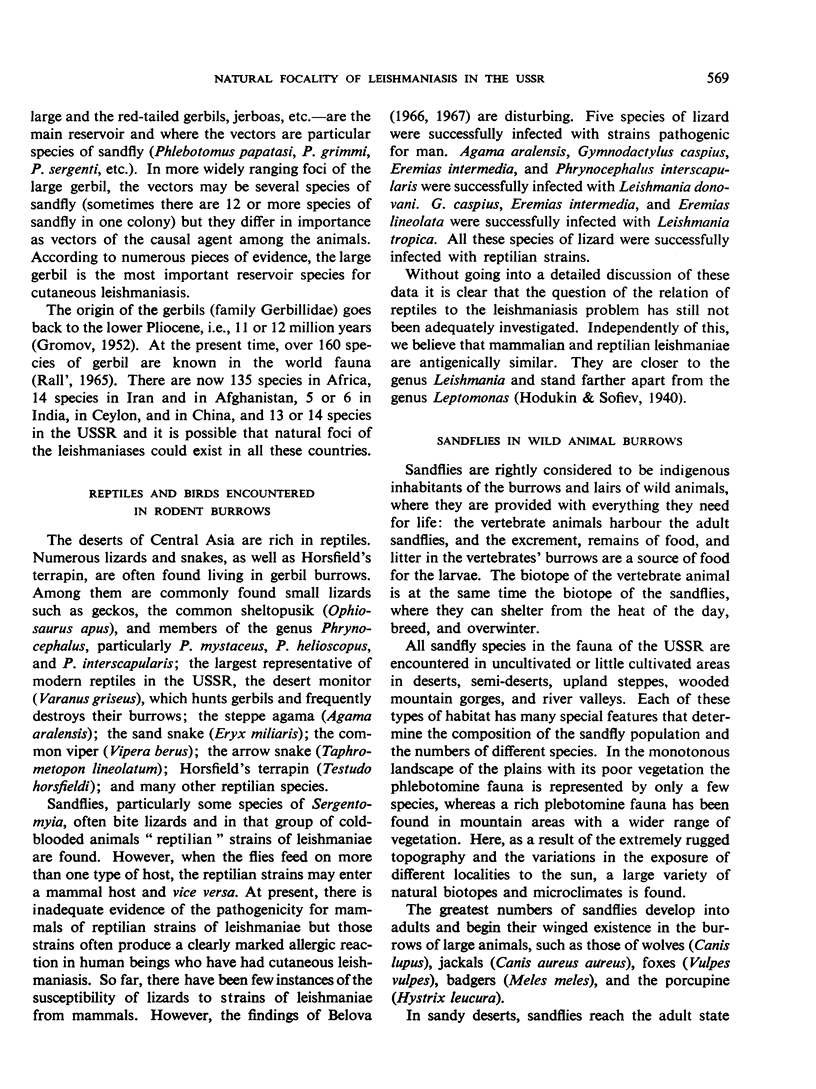
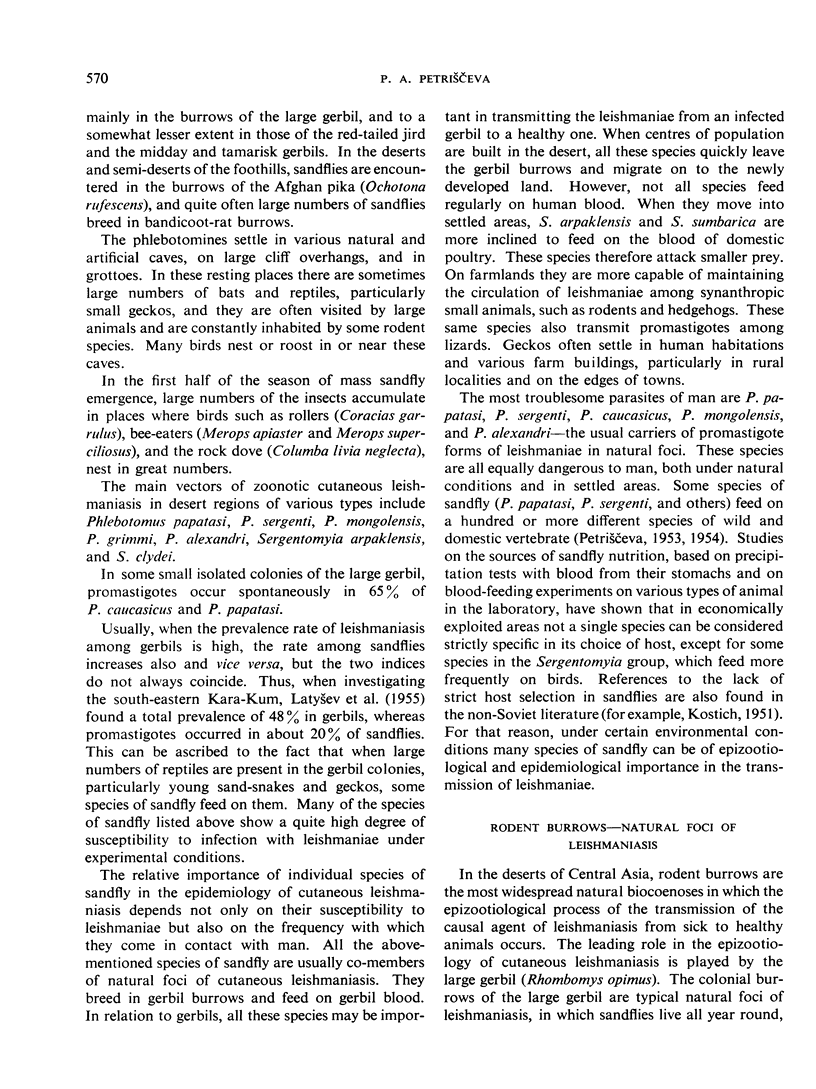
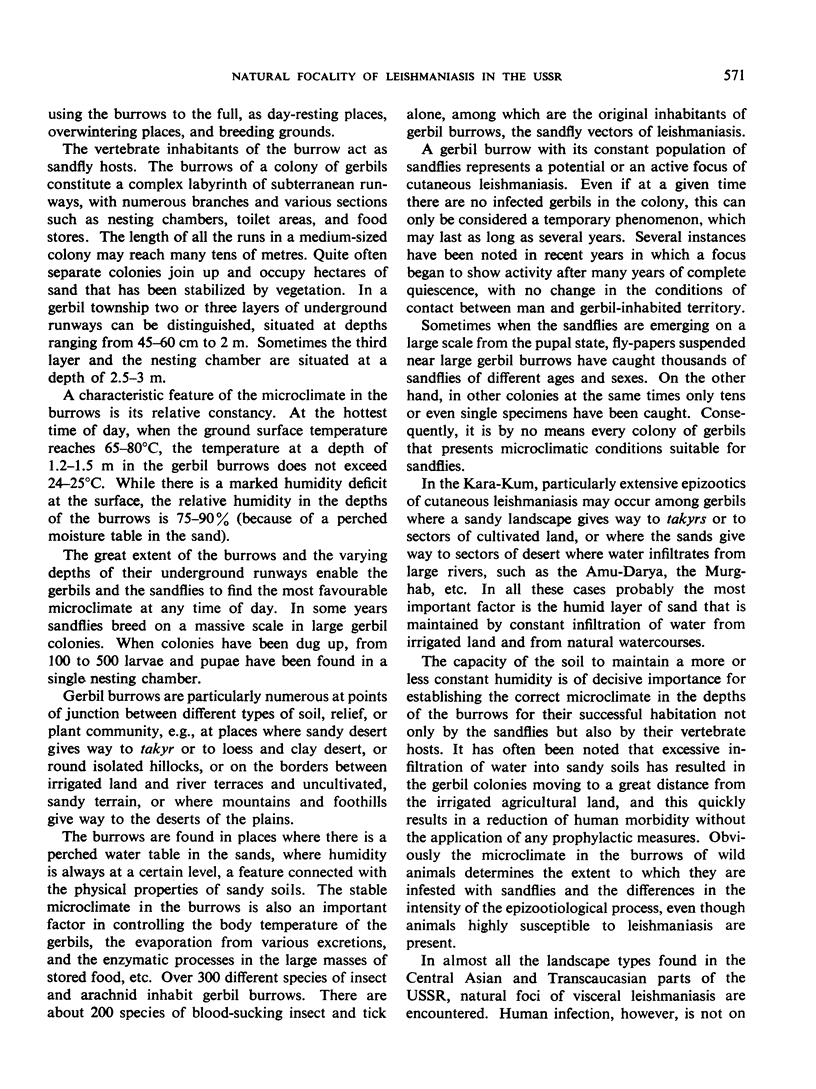
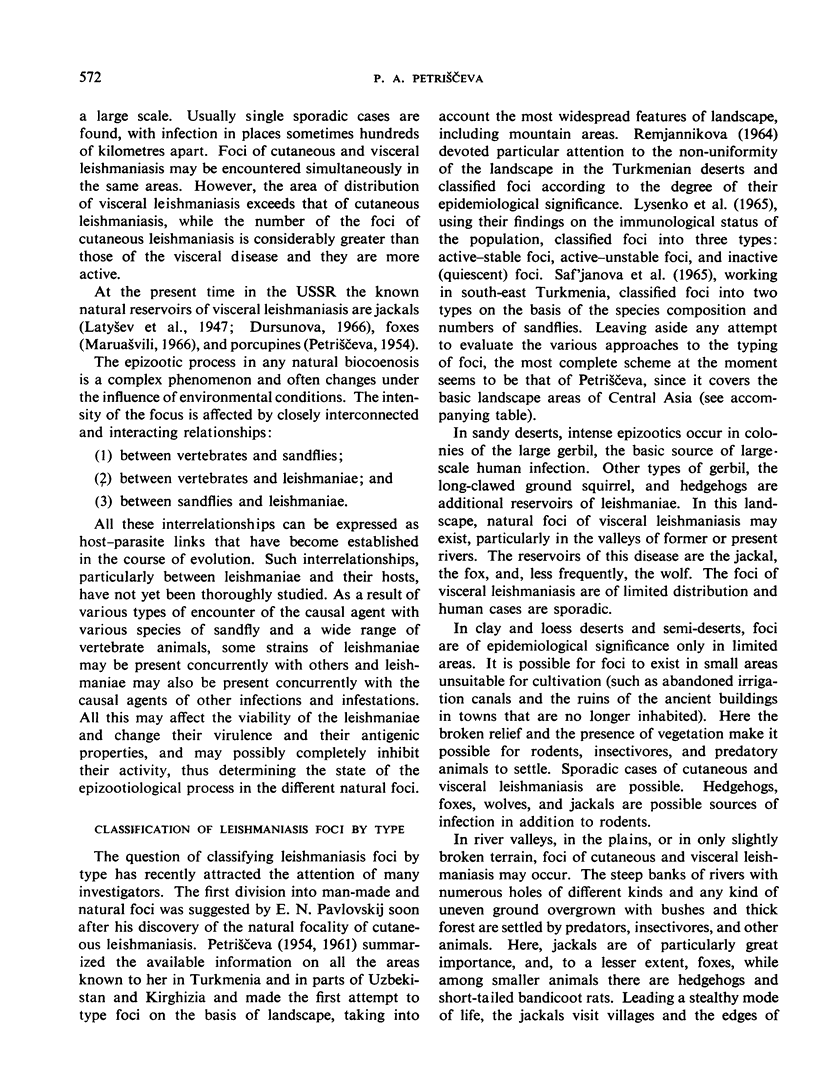
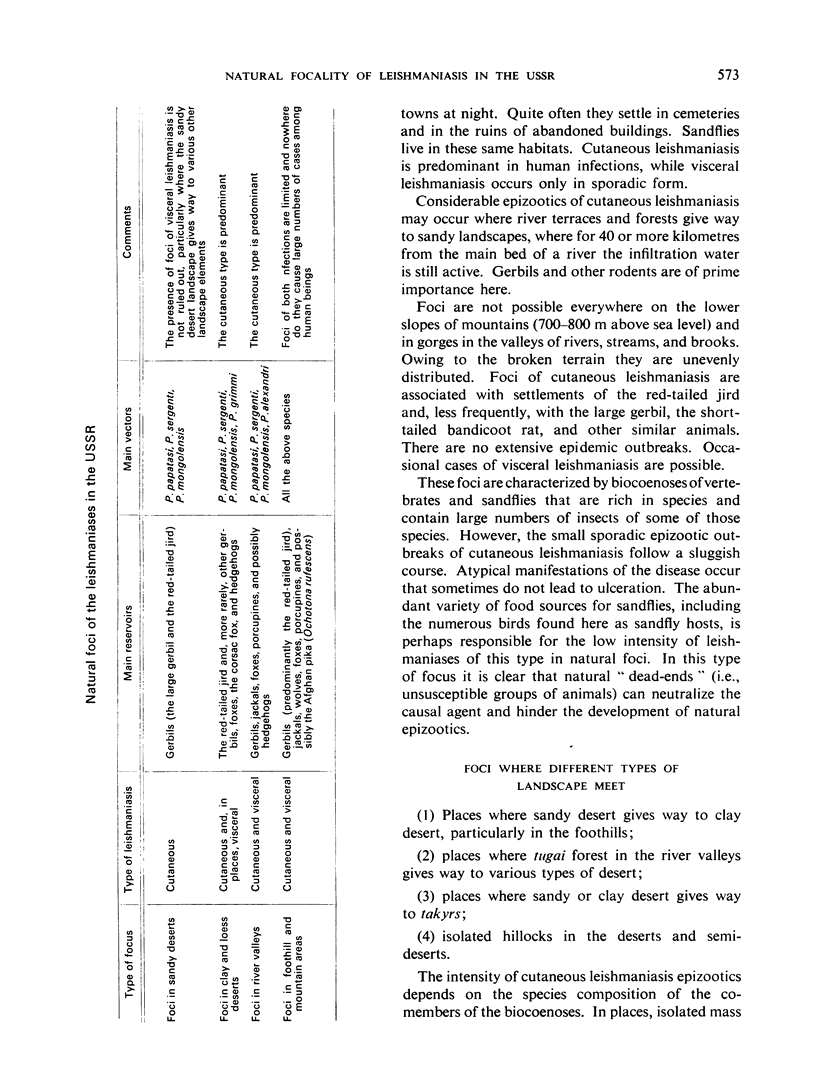
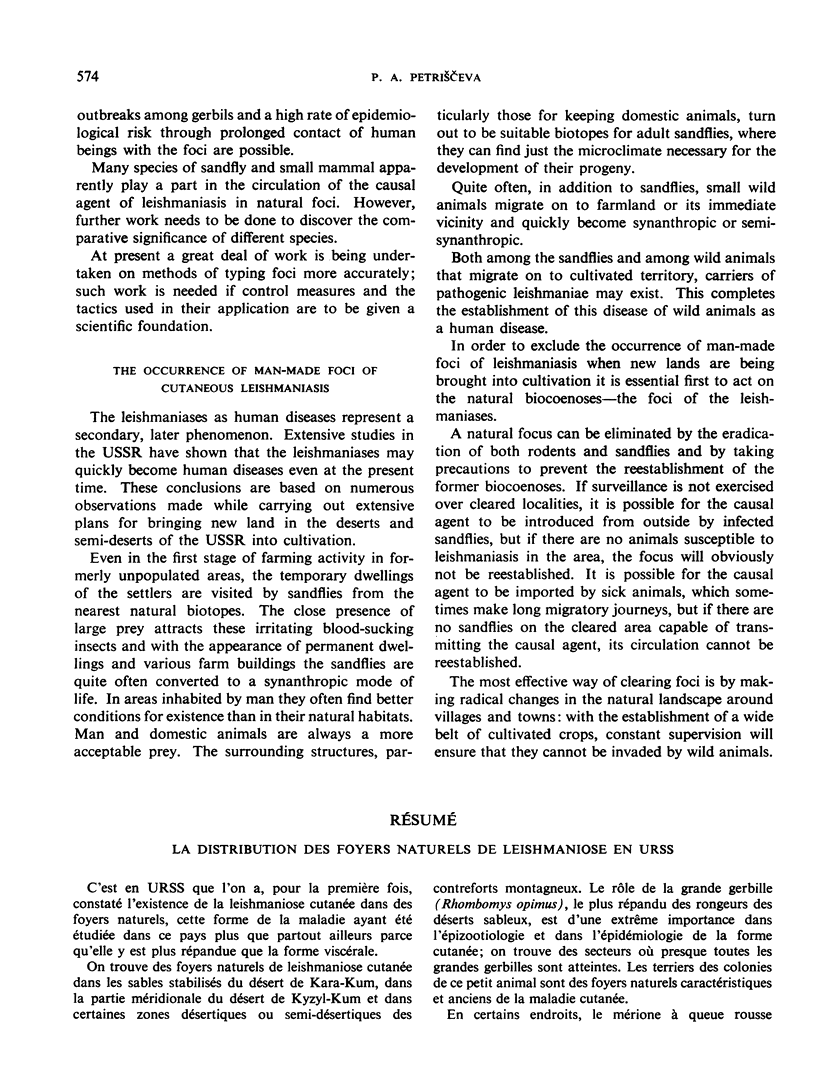
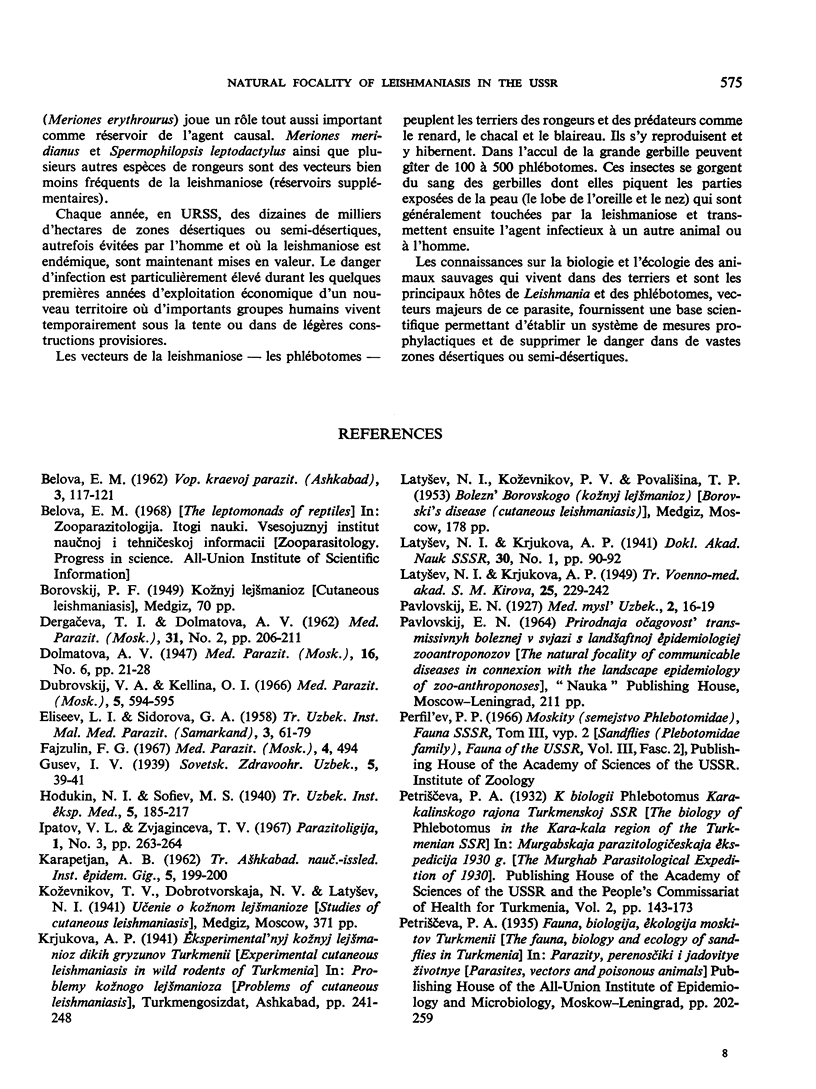
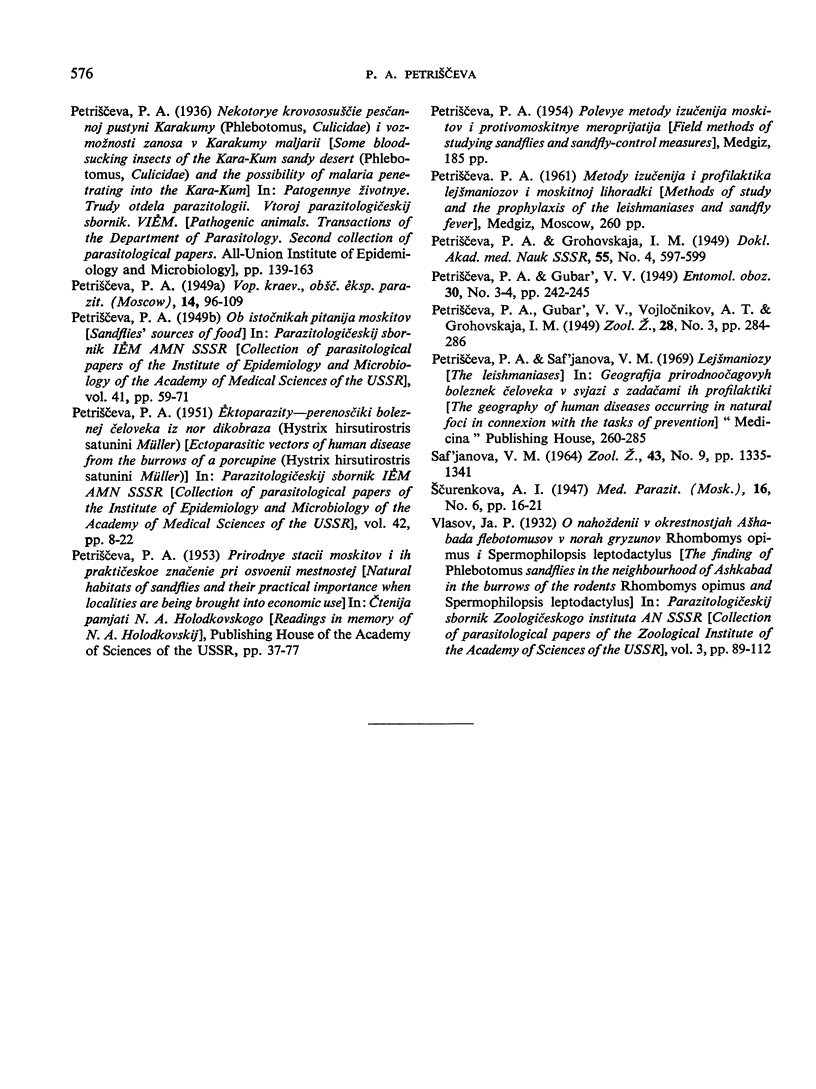
Selected References
These references are in PubMed. This may not be the complete list of references from this article.
- DERGACHEVA T. I., DOLMATOVA A. V. [On the epidemiology and epizootology of cutaneous leishmaniasis of the rural type in the Karshi oasis of the Uzbek SSR. IV. Physiological status, age composition and infestation of sandflies originating from colonies of Rhombomys opimus]. Med Parazitol (Mosk) 1962 Mar-Apr;31:206–211. [PubMed] [Google Scholar]


